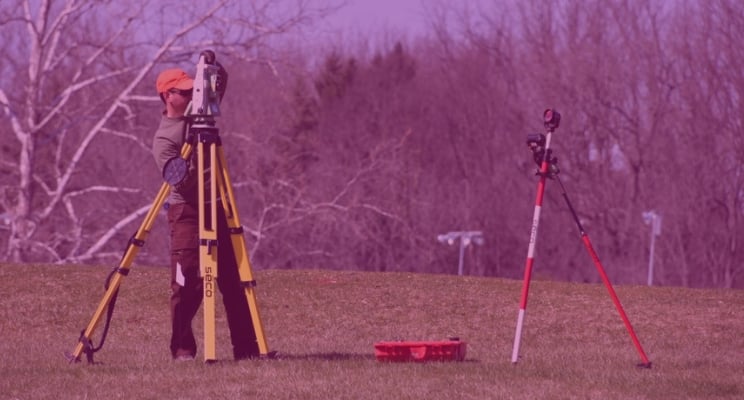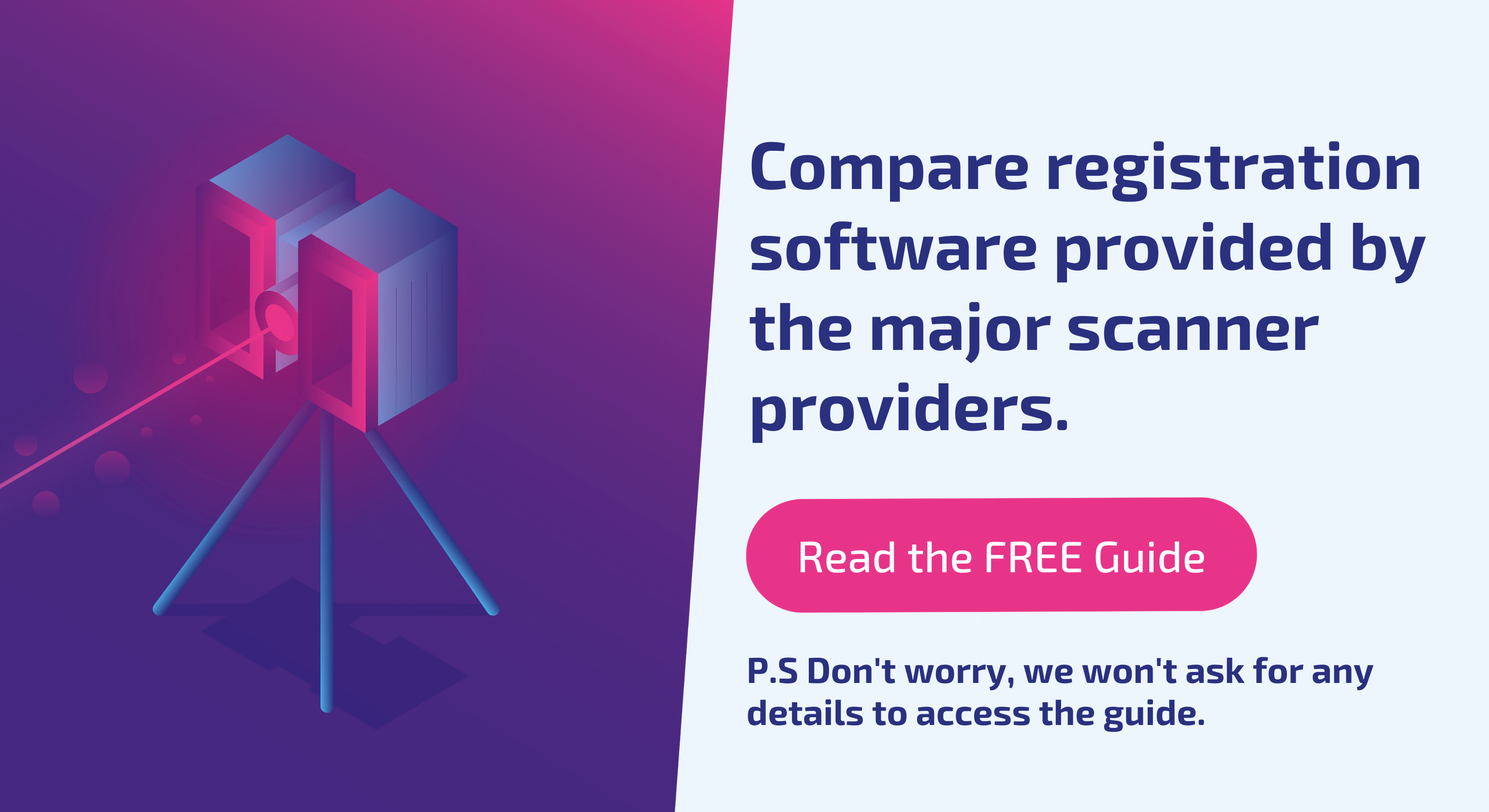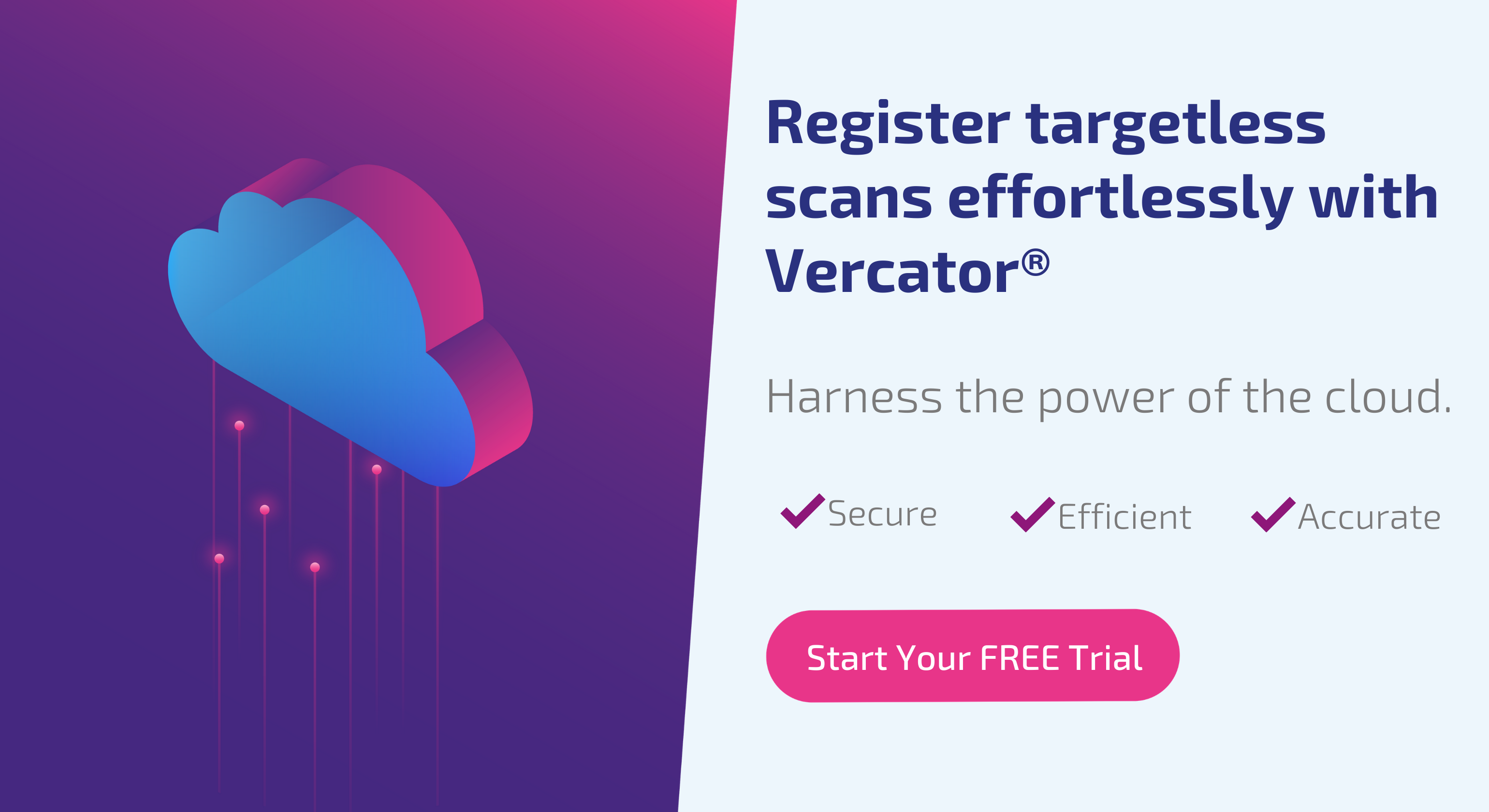How to bring land surveying into the cloud

Every industry is moving into the cloud. The cloud brings flexibility, remote access, dynamic scaling of storage, and on-demand access to computing power. Why haven’t surveyors made the jump?
The first barrier to taking surveying into the cloud is the technology needed. The mechanics of reality capture are delicate, requiring advanced algorithms to process large data flows with no room for error. There are often manual cross-checks required, and manual steps required to capture each scan.
Without automation and the ability to undertake parallel tasks simultaneously, the effective power of the cloud is limited. Without stable connections, the quantity of survey data regularly captured strains network bandwidth.
With 5G just around the corner, and advanced 4G delivering access speeds regularly spiking into 300 Mbps, bandwidth issues are becoming more manageable and upload times more realistic. But investing in access and new technology requires a bigger promise of improvement than simply performing remote uploads to applications that function in a traditional way.
Point cloud registration technology is where some of the most exciting advancements in cloud-based surveying are occurring. Here, we are going to explore the impact of the journey into cloud, and the basic steps you need to build a surveying business for the 21st century.
Step 1: Understand and communicate why you are going to the cloud
Modern surveying is a balance between speed of execution, efficiency and quality. It is basically about getting the right deliverable to the client in the most cost-effective way. With new technology comes new opportunities. This includes expanding into new areas like integrating with BIM, as well as taking different kinds of jobs, like supporting prefabricated manufacturing.
To avoid chasing too many opportunities (and there will be many), you will need to be clear about what you do and don’t want to achieve. Are you simply after the scope to grow? Do you want to exploit potential hardware cost savings and speed of processing? Do you want to move your business into new and potentially more lucrative areas? The key is to ensure that your goals are understood and they are being delivered.
Both speed and cost are very important, but there are other factors which will give surveyors even more advantages in the future. Moving your surveying workflows to the cloud, while not solely a technology issue, will deliver real benefits when you build out a case for the transition.
Greater flexibility
These days, even more than saving money, you need to know that you can scale your operations quickly to meet greater usage needs, and scale down just as quickly if resources are going unused. A cloud approach makes it easier to do this because your surveying applications will no longer need specific physical servers, in specific locations, at specific times to run.
With cloud services, you can create and then release processing and storage environments as and when you need. There is an old adage in cloud computing: own the base, rent the spike — this means you can still make the most of your core hardware and use the cloud flexibility to do more, experiment, prototype and scale up for the really big projects.
Faster deployments
Cloud computing will have a major impact on how surveyors carry out their work. By being able to access one cloud-based system and data store, scans can be loaded directly from the field — registration can even be started on site before then being uploaded and aligned with other scans. Having many scanners uploading simultaneously is much faster than consolidating everything into a mammoth project file back at the office and then trying to upload or share. In the same way, clients and stakeholders can have access to the same data via a cloud-based portal rather than trying to create a report and distribute it.
Once your pre-processed data is in the cloud, any further processing can also take place there, taking advantage of its massive parallel processing power. Your point cloud registration performance can increase dramatically, especially if your registration software can take full advantage of multi-threaded parallel processing (see Step 2).
When taking on new projects, creating — and eliminating — project-specific compute and storage resources is a much faster process, getting your project team working faster. You can now start creating a range of environments (production, development, test) with very high specifications to stage implementations and try new approaches.
Doing more with less
With fewer servers to maintain, and with a range of storage options at your disposal, you will find that you can spend less time worrying about hardware, servers and storage upgrades and more time doing real surveying work. In fact, many companies find they can cut their maintenance time by up to 50 percent on their existing hardware by moving to the cloud. This increased productivity means you can complete projects faster, and accept even more projects.
Moving applications and infrastructure to a cloud model can also create savings in the cost of your hardware upgrades. To take an example, at the moment for Scene Version 7.0, Faro recommends 8 physical cores, 64GB of RAM and 1TB solid state drive plus an NVIDIA 1080GTX for rendering and viewing — typical cost around £10,000 per workstation. For Version 5.5 in 2015, the recommended configuration was a Quad x64 processor and 8GB RAM. The rate of change of software technology and the increasing volumes of data means you’ve either got to future proof your hardware investments or risk running out of steam and upgrading constantly.
Step 2: Invest in the right cloud-enabled registration software
To make the most of the real power of cloud services, you aren’t just going to store files and data in the cloud. You will need registration software able to work in the cloud, software that can process the data automatically and present results without needing any desktop software, or human intervention.
Point clouds and laser scanners are not ‘new’ — they have been around in commercial forms since the late 1990s. What is changing is the processing technology. The slowest aspect of point cloud creation has always been ‘registration’. This is the process of stitching together the many scans required to obtain coverage of a scene or object. Traditional registration software demanded significant manual review throughout a slow process that drove up the time required to produce any point cloud scan output. With cloud-enabled software, we are now looking at a robust registration process, built from the ground up to work in the cloud, to multi-thread at a vast scale for faster and more detailed results, taking full advantage of the cloud.
Step 3: Make sure your network is up to the task
Cloud processing can take place in the field or in the office. There are different requirements and benefits of investing in both. However, networking will play a crucial role no matter where the application is hosted. It’s crucial that the network connections you have in the office are good enough to avoid any bottlenecks in data transmission. You should also look into diverse routing and fail-over if you haven’t already.
Your mobile connections will also become more crucial with the imminent move to 5G. Evaluate your mobile provider and make sure you understand their mobile footprint, speeds and data tariff packages. Make sure you also invest in field equipment that is up to the task. Increasingly, this can be done using tablets, rather than laptops, and deliver results that rely on the power of the cloud. It is also important to look into the cloud provider the software is partnered with — the reliability of a big name like AWS or Microsoft Azure is often a good place to start.
Step 4: Update your processes to match
As we said earlier, technology is never a solution — it is a tool. If you want to really impact how you perform as a surveyor, you also need to look at how the job is delivered: your workflows.
You should be looking to make some, or all, of the following changes
- Undertake coarse registration in the field
- Send registered scans back immediately from site
- Collaborate remotely using portals and visualisation
- Securely share files with clients in the cloud
- Integrate directly with BIM -- work more closely with people further down the supply chain (CAD modellers, engineers, project lead etc)
- Understand what “head-room” these changes give you to service new markets or take on more business
Step 5: Experiment
The impact of pairing new kinds of registration software and automation software with cloud computing power is massive. Delivering simultaneous registration of very large data sets from the field — with little to no extra time — opens up many new avenues for the surveyor.
Cloud is something new and transformative for a lot of surveyors and their businesses and, because it’s so new, it is understandable that requirements or exact understanding of how they want to utilise the cloud will be difficult to work through.
But the key advantage to the cloud is that you can demonstrate functionality and try out new workflows early, learn to adapt to the results and gain more of an understanding of what you really want to achieve with cloud technologies.
Technology is constantly changing. The cloud delivers flexibility and collaboration, so get the basics right, get into the cloud and then start experimenting — and start as soon as you can.
Tags: surveying


